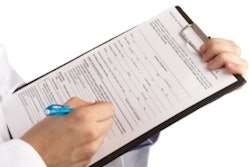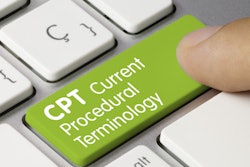
The ADA updates the Code on Dental Procedures and Nomenclature (CDT codes) each year, effective January 1. Some of the edits and changes are to clarify procedures and applications of materials and care. Other codes are updated to better serve patients, dental practices, and payors. Each of these changes requires some research on the part of the practice's coding coordinator and persistence on the part of those providing and coding the care.
For the most accurate codes, be sure to download the patch for whichever coding software your practice uses. The Health Insurance Portability and Accountability Act (HIPAA) mandates that offices and care providers use the most up-to-date code sets.
Why code updates?
 Christine Alfano is the senior director of corporate and dental channel marketing at Vyne.
Christine Alfano is the senior director of corporate and dental channel marketing at Vyne.Technology is the most prevalent cause for many of the changes and updates. With the advent of new imaging techniques and biopsy materials, new codes must keep up with these developments and attempt to ensure best possible tracking of the procedures provided. In addition, useless and generic codes and nonspecific codes must be eliminated.
Coding coordinators need to be aware of which codes were eliminated or changed and stop using them immediately.
Blood glucose codes
Let's look at two codes and how they've changed. These codes concern the measuring of a patient's blood glucose levels (D0411 and D0412).
Code D0411 (HbA1c in-office point of service testing) allows for the measurement of glucose levels over two to three months, and the test is used to confirm a patient's diabetes status. Dentists can use the proper tools to identify and evaluate asymptomatic patients.
“Technology is the most prevalent cause for many of the changes and updates.”
Screening in dental offices is an opportunity for clinicians to create patient-centered care by integrating patient touch points and encouraging collaboration with primary care professionals, which will put dentistry at the entry point of our medical care system.
Screening can be completed chairside with an HbA1c glucose monitor, allowing the dentist to evaluate a patient's A1c, which is the average blood sugar level over the past two to three months.
The procedure code is not meant to describe simple testing of the patient's blood sugar levels. The procedure can be completed at a minimal charge to the patient and at a frequency deemed necessary by the clinician.
This code is generally reimbursed by conventional dental plans but should be considered for possible medical reimbursement also.
The second code, D0412 (blood glucose level test -- in-office using a glucose meter), allows for the measuring of a patient's glucose level at that moment. The above comments also apply to this code.
Part 2 will examine changes in the coding for periodontal and prosthetic procedures.
Christine Alfano is the senior director of corporate and dental channel marketing at NEA powered by Vyne.
The comments and observations expressed herein do not necessarily reflect the opinions of DrBicuspid.com, nor should they be construed as an endorsement or admonishment of any particular idea, vendor, or organization.



















